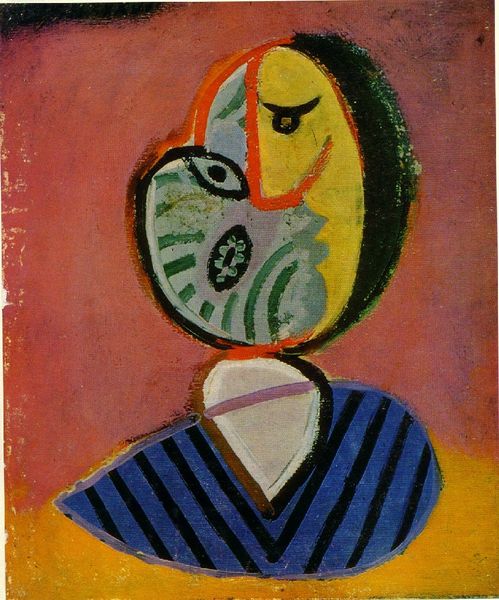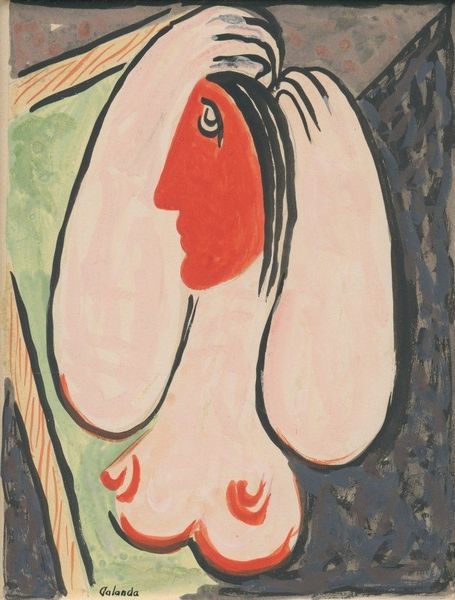
painting, oil-paint
#
portrait
#
cubism
#
painting
#
oil-paint
#
abstraction
#
modernism
Dimensions: 43 x 29 cm
Copyright: Pablo Picasso,Fair Use
Curator: We're looking at Pablo Picasso's "Head of a Woman," an oil painting he completed in 1939, and it is currently held in a private collection. Editor: Initially, it strikes me as a study in cool tones, despite the fractured form. The blues and grays lend a subdued, almost melancholic atmosphere. What about you? Curator: Yes, there is a coolness but observe how Picasso employs the fragmentation, quintessential Cubism, to deconstruct and reconstruct the face. The simultaneous perspectives challenge traditional portraiture, disrupting the conventional gaze and representing the subject from multiple angles at once. Editor: I’m wondering what types of oil paints Picasso selected, and from which supplier—how much choice would an artist have had in the variety and preparation of pigments at that moment? What processes were needed to achieve the precise tonality of those grey areas? And did those methods, as well as resource accessibility, contribute to the proliferation of those particular tones across so many paintings from that era? Curator: You are right. It would be revealing to see records regarding his material consumption. Regardless, his colour choices speak volumes. Notice how the blue disrupts the conventional flesh tone. These arbitrary colour selections create a symbolic resonance, inviting interpretation. Could the disjunction speak to inner turmoil, reflective of a Europe on the brink of war? Editor: Or even on a more personal level, do the shades reflect the accessibility of local materials based on Picasso's financial and socio-political circumstances? The work gives the feeling of hasty assembly of disparate parts; the materials must be viewed as collaborators in conveying a moment in time. How did he prepare his surfaces? Was the support canvas recycled? Curator: True, and by using such seemingly disjointed shapes, we as the viewer are forced to actively assemble meaning from chaos. Through deconstruction, he arrives at a novel kind of synthesis, urging viewers to actively participate in the creation of meaning. Editor: These material and construction questions certainly compel me to reconsider not only the subject portrayed but the wider circumstances in which the work came to be, making the artwork far more informative. Curator: A fascinating glimpse into how different lenses reveal further complexities within the artwork, offering layers of historical, contextual and aesthetic appreciation.
Comments
No comments
Be the first to comment and join the conversation on the ultimate creative platform.













